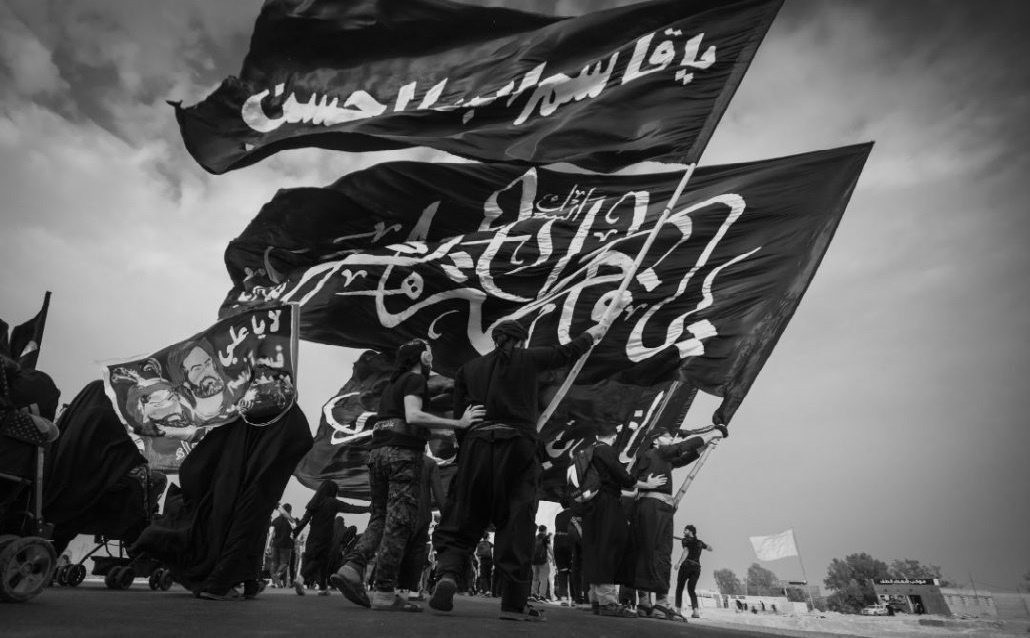Arba’een is a day when over 45 million people gather at the city of Karbala in Iraq to commemorate the martyrdom of Imam Husain, the grandson of Prophet Mohammad–and was marked on October 8 this year. In the Indian subcontinent, the period of grieving and commemoration stretches to two months and 10 days, during which time people take out processions, hold commemorative gatherings called majlis, and recite elegies or soz, marsiyas and nauhas, which narrate the story of the battle of Karbala.
ِAccording to an article by Indianexpress.com, among the myriad ways in which people commemorate the sacrifice of Husain, there is a ritual, which might seem astonishing and inexplicable to the detached observer: the maatam. It is the act of beating one’s chest with one’s bare palms, in tandem with the rhythm of the elegies and laments recited in the memory of Imam Husain and his companions. A non-compulsory ritual, but carried out with much fervour.
Never in my life have I not participated in this ritual of commemoration and grief.
I have often wondered though, why this particular act is important to me – given that gentler, quieter people stand in the back rows, doing the lightest of maatam, while people like me cannot but be in the front row, our chests pulsating with the rhythms of palms coming down heavily while chanting.
One of my theories was about age. Younger people have more aggression in them, more angst, and perhaps this is a channel—as social and community rituals tend to be — of letting out that angst and aggression in a safe space, in a sacred, fulfilling way. Channelising energies towards commemorating a huge sacrifice, towards remembering the values to uphold in life. But it wasn’t only the younger generation holding forth in the front rows, but also much older women. Obviously, age did not have everything to do with it.
But it wasn’t until January 2020 that I actually understood the metaphorical significance of maatam – not just as a symbol of grief, but also of protest. Not until I had participated in the people’s protest at Shaheen Bagh.
It wasn’t until I saw first-hand, the united chorus of voices chanting slogans of unity and equality, until I waved the Indian national flag there in the midst of a throng of thousands, that I realised the resistance of the Alam – a symbolic replica of the flag carried by Abbas, Husain’s brother, which is kept in homes and carried in processions with pride.
The Alam, the majlis and the maatam are not just spiritual symbols, but symbols of resistance. The nauhas, marsiyas, soz and salams are a means of putting forth counter-narratives. The maatam is the most fervent and physical symbol of resistance – much the same as the chanting of slogans against authoritarianism with your voice booming and your eyes blazing and your fists raised in the air, shouting: “Hum dekhenge!”
Maatam is the actual physical act of standing up and chanting, of presenting to the world a spectacle of resistance. The elegies are all symbols of resistance in much the same way as poetry and songs have been mediums of protests across the world, throughout the ages.
A procession that moves grieving and lamenting is also a procession of protest, much the same as holding hands in a candlelight march, or making a human chain.
Gathering and weeping loudly in a majlis is itself an act of protest, of constantly presenting counter-narratives to authoritarian voices. It is only now that I realise why, in nearly every majlis, the speaker exhorts the audience to weep louder, as this, they say, is how we grieve Imam Husain. It isn’t just the grief that is represented in those loud cries, it is the use of those cries as protest. The exhortation to loudness is an exhortation to make your voices heard.
For when the world asks, why do you cry? Then you narrate the story of oppression and of resistance to oppression. When the world hears you chant and watches you beat your chest, when the world watches you wave the flag of Abbas, the brother of Husain, then the world wishes to know the story behind it. In telling our stories over and over, we let the counter-narrative take charge. We reclaim power from the oppressor by chanting our slogans and making our voices heard.

